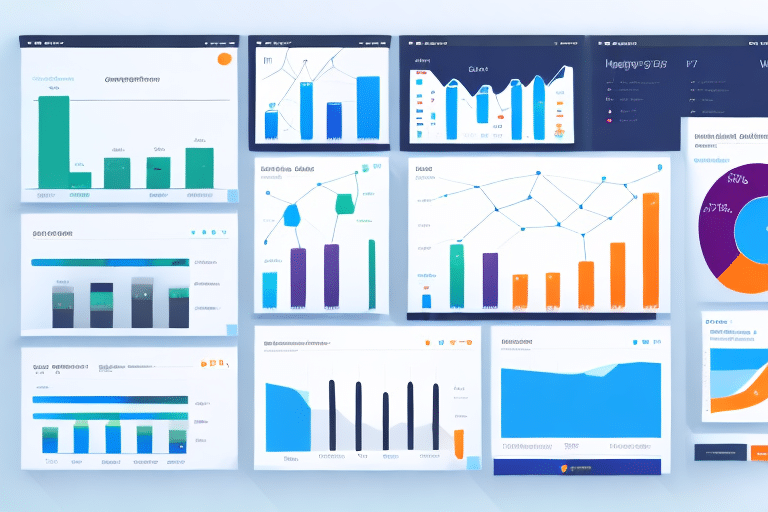The Importance of Scaling Your Ecommerce Business
In today's digital age, ecommerce websites have become a major economic force. Consumers are increasingly opting to fulfill their shopping needs online, making it essential for businesses to optimize their websites for scale. Scaling your ecommerce business means ensuring that it can handle a larger volume of traffic, sales, and data as it grows. This capability not only increases revenue but also enhances customer experience and strengthens brand reputation.
According to Statista, global ecommerce sales surpassed $5 trillion in 2023, underscoring the critical importance of scalability in maintaining competitive advantage. A scalable ecommerce platform allows businesses to manage traffic spikes, seasonal sales increases, and expanding product lines without compromising site performance or customer satisfaction.
Website Optimization for Growth
Search Engine Optimization (SEO)
Search Engine Optimization (SEO) is pivotal for improving your website's visibility and ranking in search engine results pages (SERPs). Effective SEO strategies can lead to increased organic traffic and higher conversion rates. Key SEO practices include:
- Keyword Research: Identifying and targeting relevant keywords that potential customers use to search for products.
- On-Page Optimization: Enhancing meta tags, headlines, and content to align with targeted keywords.
- Technical SEO: Ensuring website speed, mobile-friendliness, and secure connections (HTTPS).
- Quality Backlinks: Building reputable backlinks from authoritative sources to boost domain authority.
Implementing these strategies effectively can improve your site's ranking, as evidenced by a Moz study showing that the first five results on Google capture 67.60% of all clicks.
Enhancing User Experience (UX)
User Experience (UX) is a critical factor in both retaining customers and driving conversions. A well-optimized UX ensures that visitors can navigate your site easily and find what they are looking for without frustration. Key elements of UX optimization include:
- Responsive Design: Ensuring your website is mobile-friendly and performs well on all devices.
- Fast Loading Times: Reducing page load times to prevent user drop-off; Google recommends keeping load times under 3 seconds.
- Intuitive Navigation: Designing clear and logical navigation menus to help users find products quickly.
- Personalization: Tailoring content and recommendations based on user behavior and preferences.
A positive UX not only enhances customer satisfaction but also contributes to higher search engine rankings, as search engines prioritize websites that offer excellent user experiences.
Effective Strategies for Scaling
Supply Chain Management
Efficient supply chain management is essential for scaling your ecommerce business. This involves optimizing inventory levels, streamlining order fulfillment processes, and building strong relationships with suppliers. According to a report by Forbes, businesses that effectively manage their supply chains can reduce operational costs by up to 20%.
Customer Retention
Focusing on customer retention is more cost-effective than acquiring new customers. Implement strategies such as:
- Excellent Customer Service: Providing timely and helpful support to address customer inquiries and issues.
- Loyalty Programs: Offering rewards and incentives to encourage repeat purchases.
- Personalized Marketing: Using data analytics to tailor marketing messages to individual customer preferences.
Retention strategies can significantly increase the lifetime value of customers. Research from Bain & Company suggests that increasing customer retention rates by 5% can increase profits by 25% to 95%.
Expanding Markets and Diversifying Product Offerings
To achieve scale, it’s important to diversify your product offerings and enter new markets. This can involve:
- Introducing New Product Lines: Expanding your catalog to include complementary or high-demand products.
- Entering New Geographic Markets: Localizing your website and marketing efforts to cater to different regions.
- Exploring Additional Sales Channels: Utilizing marketplaces like Amazon and eBay to reach a broader audience.
Expanding into new markets and diversifying your product range can help mitigate risks and tap into new revenue streams.
Leveraging Data and Analytics
Analyzing Website Traffic
Understanding your website traffic and user behavior is crucial for identifying growth opportunities. Key metrics to monitor include:
- Traffic Sources: Identifying where your visitors are coming from, such as organic search, paid ads, or social media.
- User Behavior: Tracking how users navigate your site, which pages they visit, and where they drop off.
- Conversion Rates: Measuring the percentage of visitors who complete desired actions, such as making a purchase.
Tools like Google Analytics provide comprehensive data that can help you make informed decisions to enhance your website’s performance.
Data-Driven Decision Making
Utilizing data analytics enables businesses to make informed decisions regarding product offerings, marketing strategies, and customer engagement. By analyzing sales patterns and customer demographics, you can tailor your strategies to better meet market demands.
For example, Harvard Business Review highlights that data-driven organizations are 23 times more likely to acquire customers, six times as likely to retain customers, and 19 times as likely to be profitable.
Building a High-Converting Ecommerce Site
Compelling Product Pages
Product pages are pivotal for conversions. To maximize their effectiveness:
- High-Quality Images and Videos: Showcase products from multiple angles and include demonstration videos.
- Clear and Persuasive Descriptions: Provide detailed information about product features and benefits.
- Customer Reviews and Ratings: Incorporate social proof to build trust and credibility.
- Related Products: Suggest complementary products to encourage additional purchases.
According to BigCommerce, effective product pages can increase conversion rates by up to 30%.
Optimizing the Checkout Process
The checkout process is where many potential customers abandon their carts. To reduce cart abandonment, implement the following best practices:
- Streamlined Checkout Flow: Minimize the number of steps required to complete a purchase.
- Multiple Payment Options: Offer various payment methods, including credit cards, PayPal, and digital wallets.
- Guest Checkout: Allow customers to make purchases without creating an account.
- Security Assurance: Display trust badges and ensure secure transactions to build customer confidence.
A study by Shopify found that reducing the number of checkout steps can significantly decrease cart abandonment rates.
Tools and Technologies for Scaling
Employing the right tools and technologies is essential for supporting the growth of your ecommerce business. Key technologies include:
- Advanced Ecommerce Platforms: Platforms like Shopify and Magento offer scalable solutions that can grow with your business.
- Content Management Systems (CMS): Systems like WordPress enable easy management of website content.
- Data Analytics Tools: Tools such as Tableau and Google Analytics provide valuable insights into website performance and customer behavior.
- Marketing Automation Software: Solutions like HubSpot and Mailchimp help automate email marketing, social media posting, and other marketing tasks.
Integrating these tools effectively can enhance operational efficiency and support sustained growth.
Avoiding Common Pitfalls
While scaling an ecommerce business offers significant rewards, it also comes with potential challenges. Common pitfalls to avoid include:
- Expanding Too Quickly: Rapid expansion without adequate infrastructure can lead to operational inefficiencies and customer dissatisfaction.
- Ignoring User Feedback: Failing to consider customer feedback can result in missed opportunities for improvement.
- Neglecting Technology Upgrades: Outdated technology can hinder site performance and scalability.
- Compromising on User Experience: As you scale, maintaining a positive user experience is crucial for retaining customers.
By proactively addressing these challenges, you can ensure a smoother scaling process and sustained business success.
Conclusion: Key Takeaways for Optimizing Your Ecommerce Site for Long-Term Success
Scaling your ecommerce business requires a multifaceted approach that encompasses website optimization, strategic planning, and continuous innovation. By focusing on SEO, enhancing user experience, leveraging data analytics, and utilizing the right tools and technologies, you can position your business for long-term growth and success. Additionally, being mindful of common pitfalls and maintaining a customer-centric approach will help sustain your competitive edge in the ever-evolving ecommerce landscape.
For more insights and strategies on scaling your ecommerce business, consider exploring resources from industry leaders such as Shopify and BigCommerce.






















